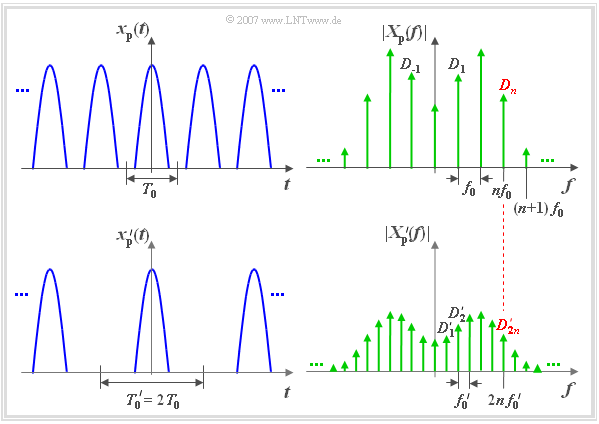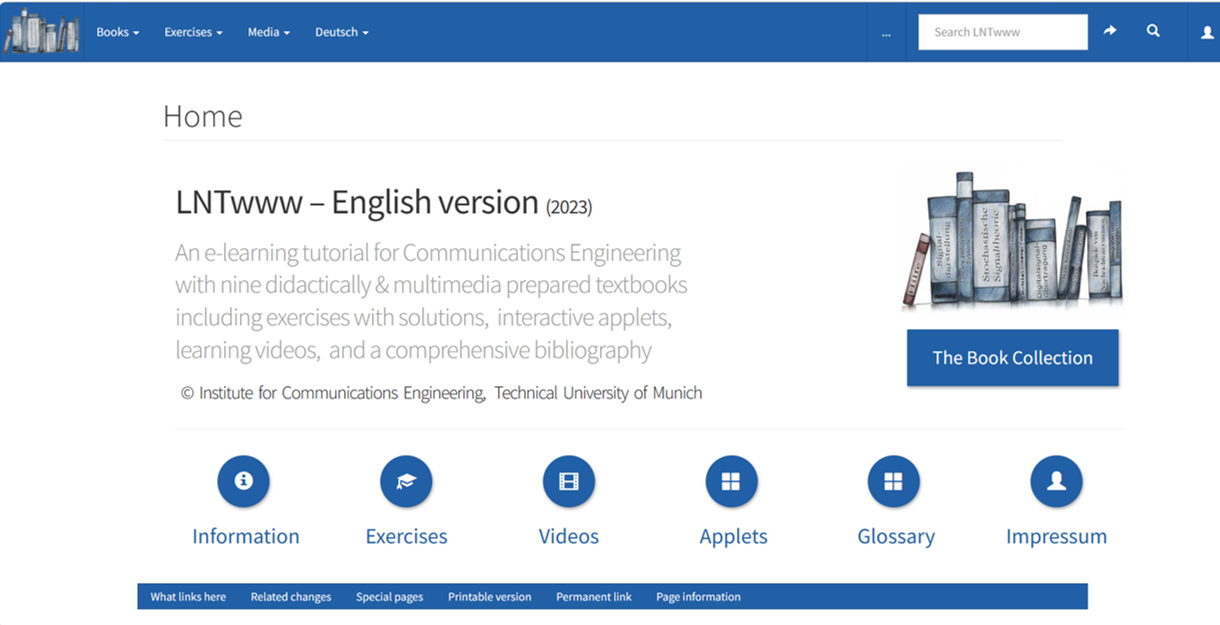E-learning Platform for Communications Engineering
We describe the e-learning project »LNTwww« for Communications Engineering with nine didactic multimedia textbooks including exercises with solutions, learning videos, and interactive applets. It is offered by the TUM Institute for Communications Engineering« and freely accessible. Registration is not necessary and no system requirements are needed.
The German-language version »www.LNTwww.de« was created by members of our Institute between 2001–2021. In spring 2020 we started the English translation, in spring 2023 we finished.
Hier die einzige Grafik entsprechend diesem Link Home und einigen Markierungen. Bildunterschrift:
Home page of the English version with link markers
(Home) https://en.lntwww.de/Home
(A) https://en.lntwww.de/LNTwww:About_LNTwww
(B) https://en.lntwww.de/Book_Overview
(C) https://en.lntwww.de/LNTwww:Information
(D) https://en.lntwww.de/Exercises:Exercise_Overview
(E) https://en.lntwww.de/LNTwww:Videos
(F) https://en.lntwww.de/LNTwww:Applets
(G) https://en.lntwww.de/LNTwww:Glossary
(H) https://en.lntwww.de/LNTwww:LNTwww_Impressum
(I) https://www.lntwww.de/Startseite
All important features of this project are summarized in the file »About LNTwww« via the link (A), among others: • The didactic concept of LNTwww • Content and scope of LNTwww • Design and structure of LNTwww
To illustrate these texts, here is an example of how to use our learning tutorial: 1. After pressing the Book Collection button, a selection screen appears with the nine textbooks as well as the book »Biographies and Bibliographies«. 2. After selecting the book Information Theory, its start page appears with links to the four main chapters as well as to exercises, multimedia elements and literature. 3. We now select the first main chapter »Entropy of Discrete Sources« and of this in turn the first subchapter Discrete Memoryless Sources with seven sections on Information Theory. 4. As in conventional mathematical-technical textbooks, the facts are illustrated by texts, models, diagrams, equations and derivations. However, multimedia elements are also used. 5. The last two sections of each subchapter are exercises and references to the topic covered.

